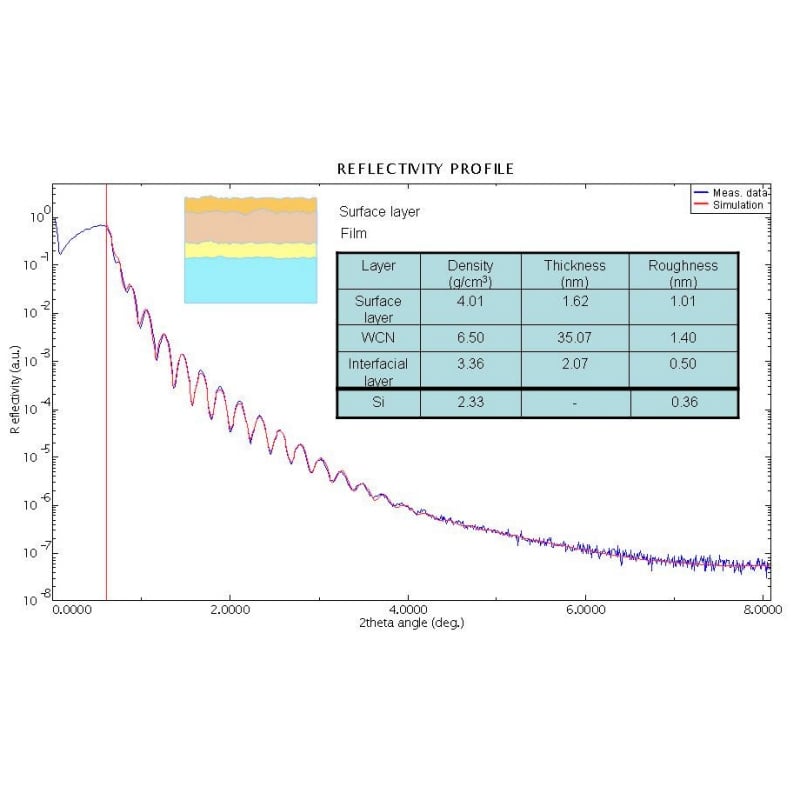What Is X-ray Reflectometry (XRR)?
Thickness, density and roughness for multilayers on wafers
Used to determine thickness, density and roughness for single and multilayer stacks on semiconductor wafers, XRR analysis can be performed on both crystalline and amorphous materials. When X-rays are applied to a material's flat surface at grazing angles of incidence, total reflection will occur at or below a critical angle. This angle is exceedingly small and is referred to as the critical angle. The angle varies depending upon the electronic density of the material.
The higher the incident X-ray angle relative to the critical angle, the deeper the X-rays transmit into the material. With a material whose surface is ideally flat, the reflectivity suddenly decreases at angles above the critical angle in proportion to θ-4.
If the material surface is rough, it causes a more drastic decrease in reflectivity. If such a material, serving as a substrate, is evenly overlaid with another material having a different electronic density, then reflected X-rays from the interface between the substrate and the thin film as well as from the free surface of the thin film will either constructively or destructively interfere with each other—resulting in an interference induced oscillation pattern.

To a first approximation, the intensity scattered by a sample is proportional to the square of modulus of the Fourier transform of the electron density. Thus the electron density profile can be deduced from the measured intensity pattern, and subsequently the vertical properties (layer thicknesses) as well as the lateral properties (roughness and correlation properties of interfaces or lateral layer structure) characterizing multilayers can be determined. Specifically, film thickness can be determined from the periodicity of the oscillation and information on the surface and interface from the angular dependency of the oscillation pattern's amplitude.
XRR can generally characterize films ranging from ~1 nm to several hundred nanometers. The technique can generally distinguish between films in a stack that have at least ~5% density difference.
XRR is a first-principles (absolute) technique that requires no calibration. In fact, XRR is often used to characterize thickness standards for XRF measurements. Light optical techniques require knowledge of optical indexes of materials for analysis and those values can vary in ultrathin films. In contrast, the refractive indexes of X-rays are very close to one for all materials, making XRR ideally suited to characterize films films ≤10 nm.
Rigaku recommends the following products

Contact Us
Whether you're interested in getting a quote, want a demo, need technical support, or simply have a question, we're here to help.
